

Neil Briscoe
2026 Xpeng G6 AWD Performance review: Quick drive
5 Days Ago
It's a handsome looker, but the Alfa Romeo Tonale plug-in hybrid will need to be more than a pretty face if it's to succeed on the sales charts.
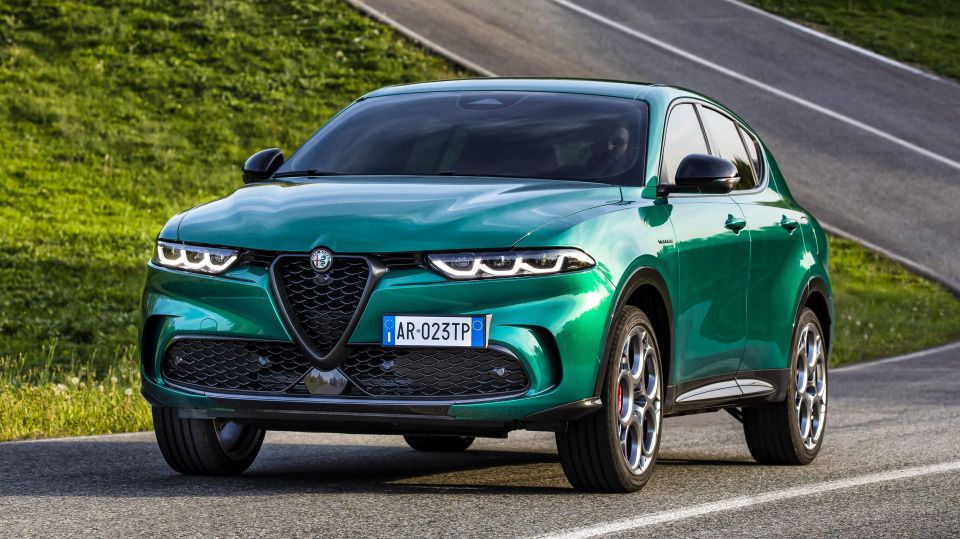


Quickly see how this car stacks up against its competition. Select any benchmark to see more details.
Where expert car reviews meet expert car buying – CarExpert gives you trusted advice, personalised service and real savings on your next new car.
You’re looking at the first step in a plan to make Alfa Romeo all-electric by 2027.
The Tonale is the first plug-in hybrid Alfa Romeo, and is a stepping stone between the range of petrol and diesel-powered cars in its showrooms now, and the first electric model that’ll join them in 2024.
Beyond the shift to electrification, the Tonale also represents a long-overdue push into a key slice of the luxury car market.
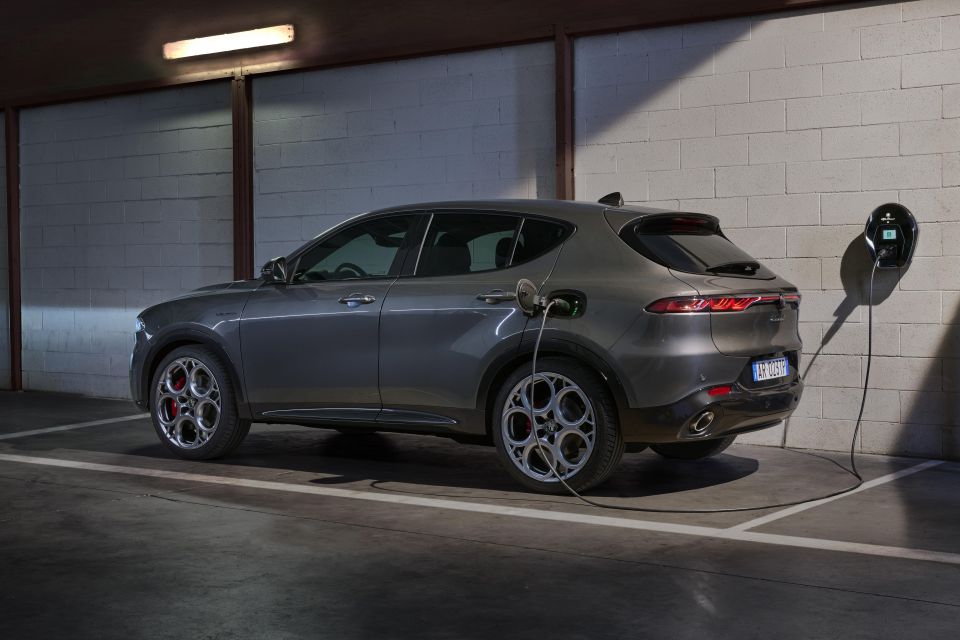
The small SUV segment is the a huge part of the luxury race in Australia, led by the Mercedes-Benz GLA, Audi Q3, BMW X1, and Volvo XC40.
Alfa’s Tonale has the good looks to draw some serious attention among that crowd, but it’ll need to be more than just a pretty face if it’s to make serious inroads on the sales charts.
It launches Down Under early in 2023 with mild-hybrid power, with the plug-in hybrid on test here to follow late in the year.
How does the first Alfa Romeo plug-in hybrid (PHEV) perform?
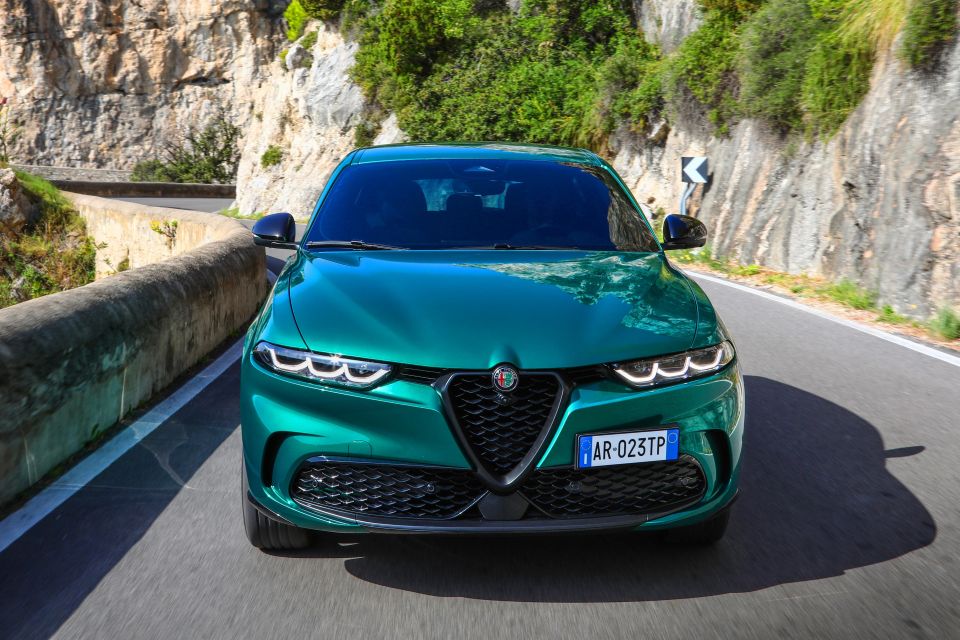
Pricing for the Tonale PHEV hasn’t been announced for Australia, but the mild-hybrid range will kick off at $49,900 before on-road costs when it touches down early in 2023. The range-topping (mild) Hybrid Veloce will set you back $54,400 before on-roads.
Alfa Romeo hasn’t offered an indicative price for the Tonale PHEV, but expect to pay a decent premium over the equivalent hybrid model. In Europe, the price gap between the powertrains is equivalent to around $15,000.
Plug-in hybrid rivals are thin on the ground in Australia for the Tonale. BMW won’t be bringing the X1 PHEV, Mercedes-Benz has signalled its plans to ignore PHEV power locally, and Audi hasn’t committed to bringing the Q3 PHEV yet.
Volvo also recently killed the XC40 Recharge Plug-In Hybrid, although Cupra does offer the Formentor VZe for $60,990 before on-road costs.
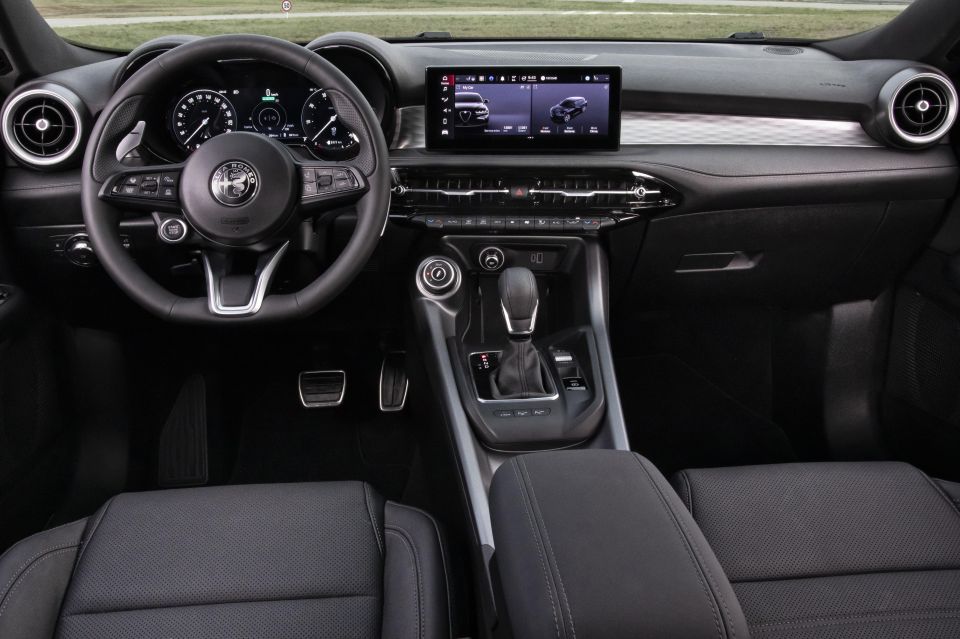
Buy your new car without the stress. It's fast, simple and completely free.

Great service from Travis and team, second time I have used this business would not hesitate to recommend them to anyone
Craig C.
Purchased a Ford Ranger in Sunshine Coast, QLD
CarExpert helped Craig save $7,224 on his Ford Ranger, now let us save you on your next new car.
Get your BEST priceSick of the same-same Germans and their obsession with flashy lights and screens? The Tonale treads a different path.
Sure, the requisite touchscreen infotainment system and digital dashboard are present, but they’re part of a cabin that feels distinctly Alfa Romeo.
The front seats in the Tonale we drove were generously padded, with enough bolstering to feel sporty, and the steering wheel has been lifted from the larger Stelvio. With the start button popping out of its hub and metal paddles mounted to the steering column, it looks fantastic – although you won’t actually use the paddles, and they obstruct the stalks behind them…
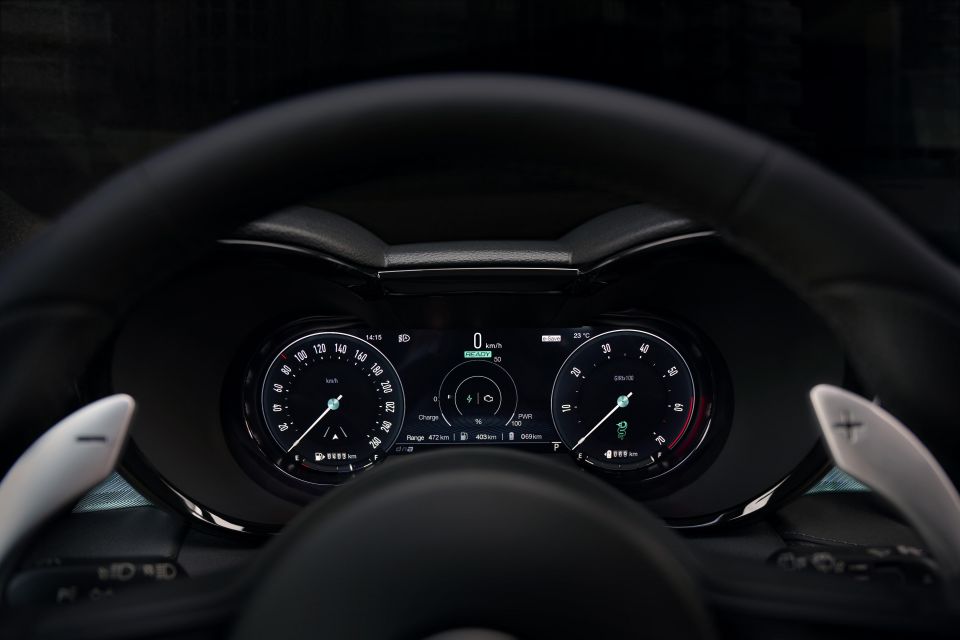
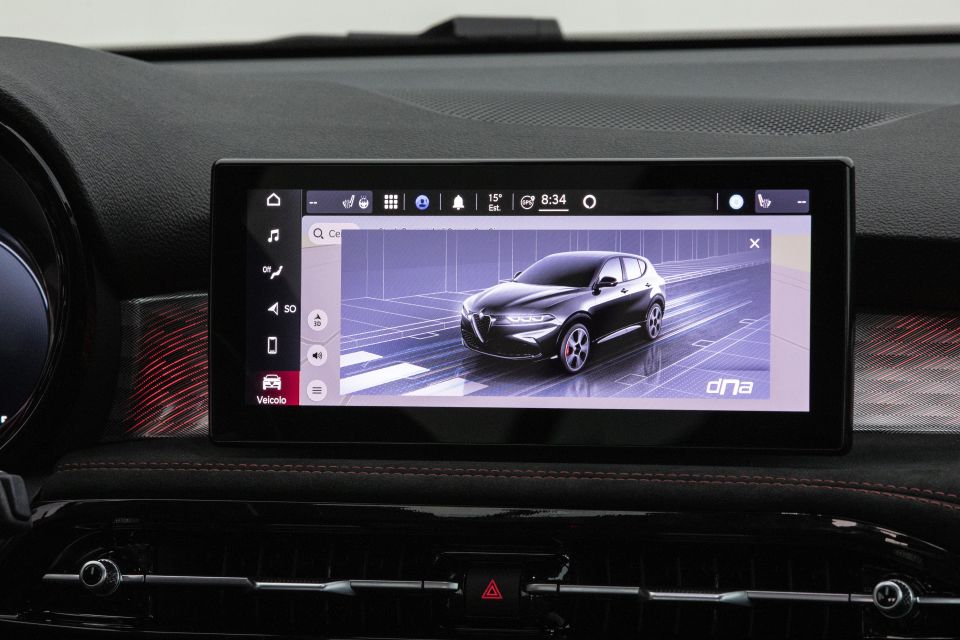
Facing the driver is a digital instrument binnacle capable of showing maps, a trip computer, or your media details. The range of views and detail offered is in keeping with what’s available elsewhere in the segment, which isn’t something we’ve been able to say about other recent Alfa Romeos and their more basic analogue dashes.
It’s also able to mimic classic Alfa Romeo dials, which is a touch we’d love to see more carmakers integrate.
The touchscreen infotainment system is set high on the dashboard and angled towards the driver. It’s easy to reach on the move, and based on our limited poking around offers snappy responses.
Smartphone mirroring is wireless, and the hybrid nerds out there are able to delve deep into stats about how they’ve been using the car’s PHEV system.
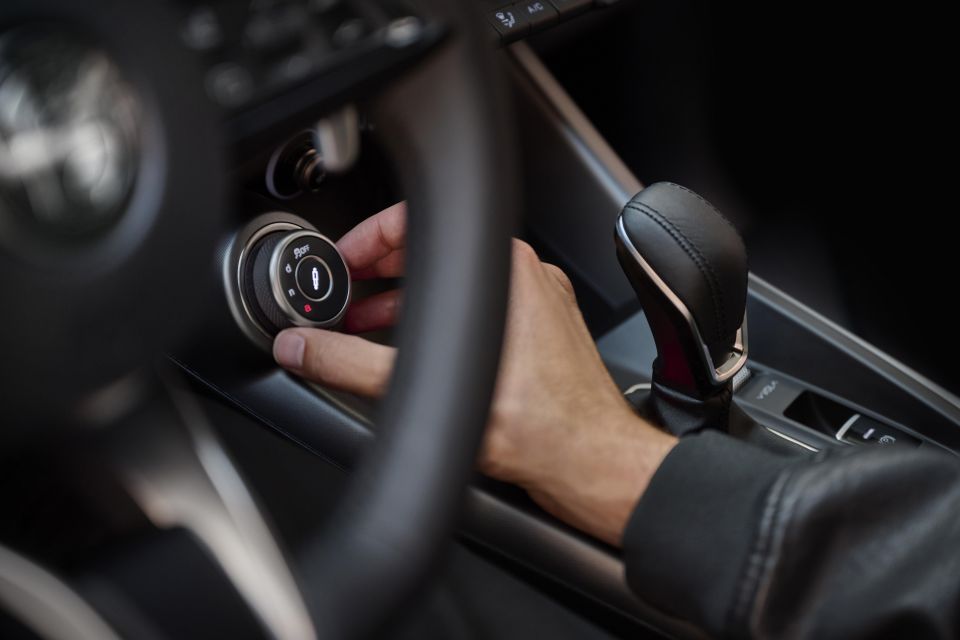
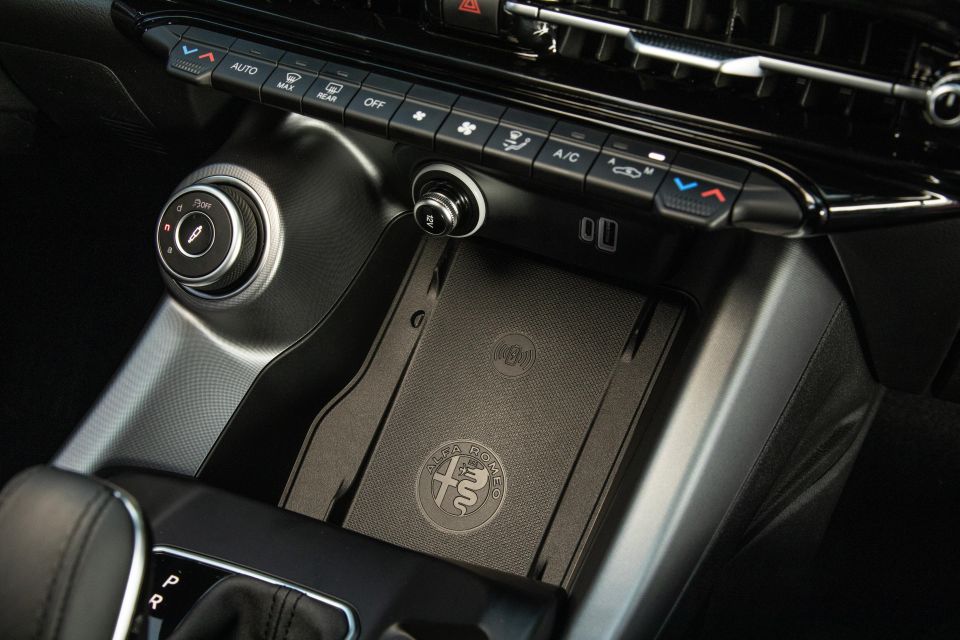
Mercedes-Benz and BMW still offer more polished graphics, but the Tonale doesn’t feel far off the pace.
For the most part, it feels like a nicely screwed together cabin. The seats are excellent, the dashboard on our Speciale tester was trimmed in soft materials, and the major controls are all well thought-out.
There are some scratchy plastics down lower but that’s par for the class, and the way the rest of the cabin is presented really is excellent.
You also get plenty of spaces to store your stuff, from the wireless charge pad and open bin at the base of the dashboard to the central cupholders, small-ish underarm bin, and bottle-friendly door pockets.
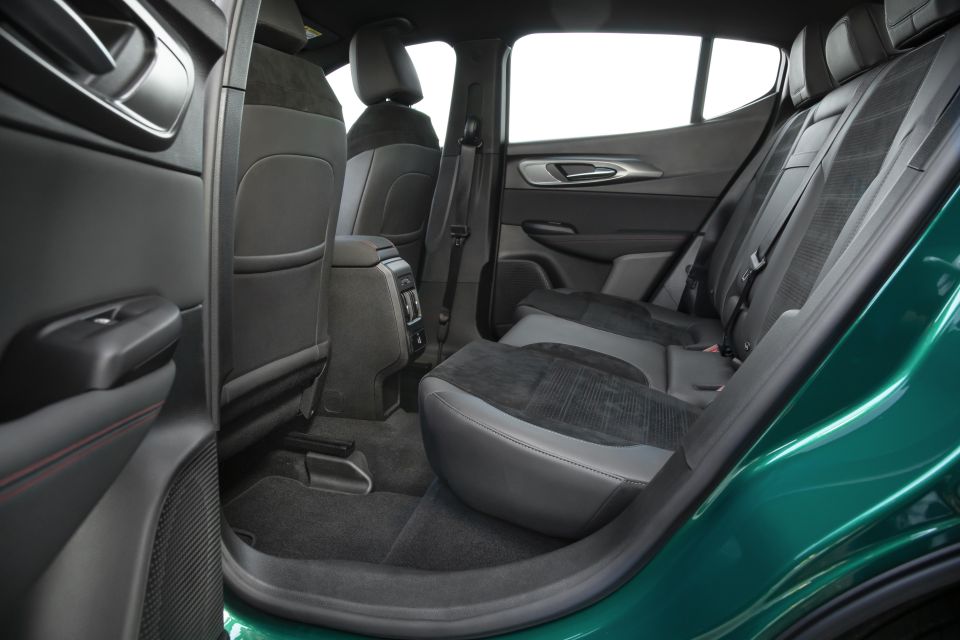
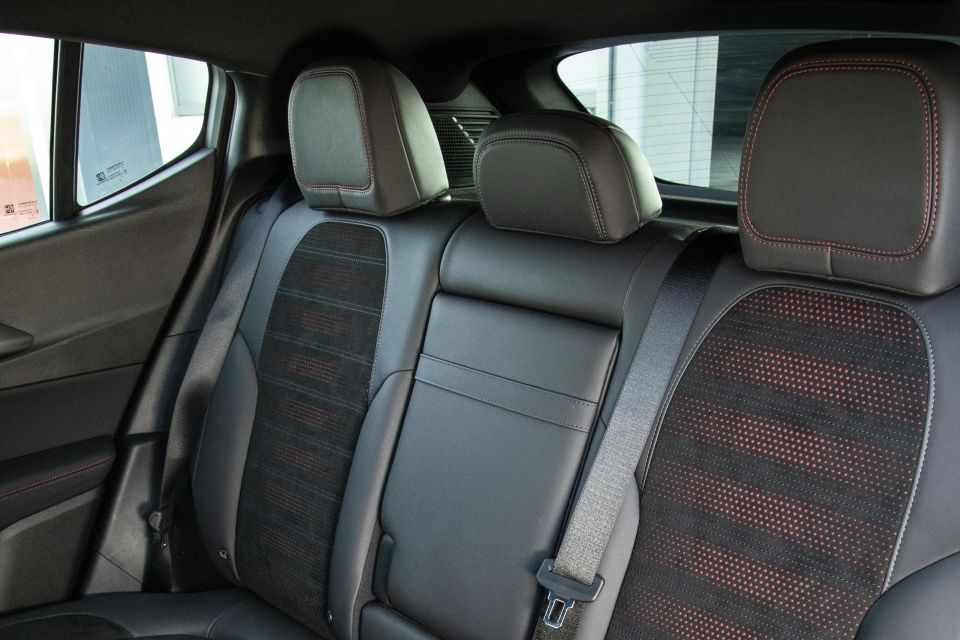
Alfa Romeo made some bold claims about the amount of cabin space on offer, arguing it designed the Tonale to house four 1.9m tall adults at the same time.
There’s no doubt the rear seats are better than what’s on offer in most rivals, but it’s not time to sell your basketball team’s minibus just yet. Legroom and toe-room are very good for the class behind a regular-height front passenger, but tall teenagers or adults will have their head close to the roof lining back there.
The pinched glasshouse means those same tall passengers will also find themselves looking at black cloth instead of out the window.
Despite what the slinky windowline (augmented by some clever gloss black trim) might suggest, the actual door opening is quite tight. If you’re loading a kid into a child seat regularly, or need to fit growing teenagers, it’s worth keeping in mind.
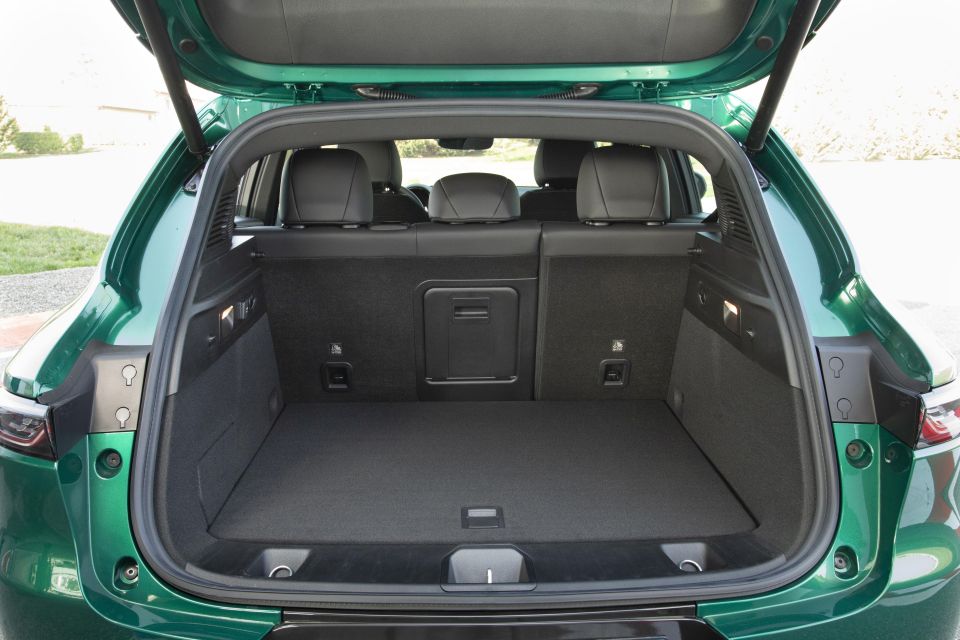
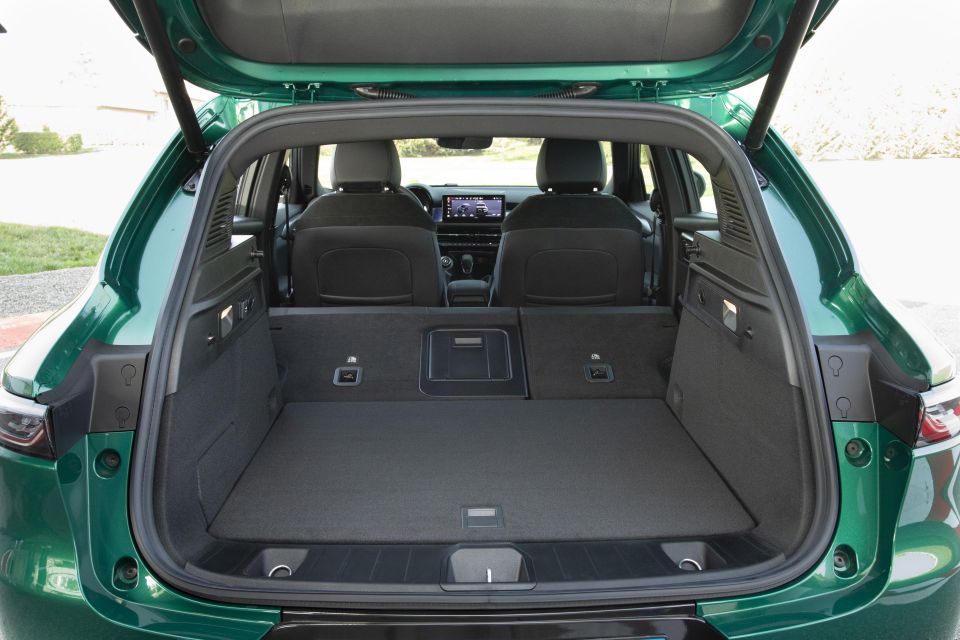
Amenities in the rear include one USB-A and one USB-C port, along with air vents, a fold-down central armrest, and bottle pockets in the doors.
Unlike a BMW X1, the Tonale doesn’t have a 40/20/40 folding rear bench. Instead, it has a 60/40 split with a central window for loading long items such as skis.
Claimed boot space is 385 litres, expanding to 1430L with the rear bench folded flat. That’s down on the 500L you get in a BMW X1 PHEV, but it’s still a long and reasonably wide space.
There’s no loading lip, allowing you to slide bags straight in rather than having to place them.
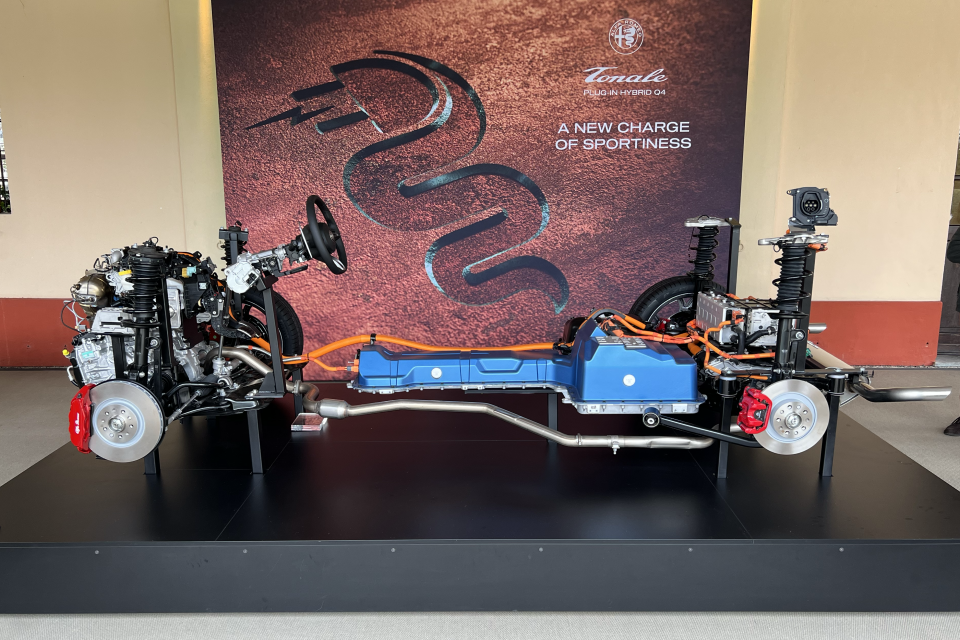
Power in the Tonale PHEV comes from the combination of a 1.3-litre turbocharged petrolengine making 132kW of power and 270Nm of torque, teamed with a 90kW electric motor.
There’s also a 33kW electric motor paired with the engine, although it never directly drives the wheels. Instead, it helps the turbocharger at low engine speeds to cut lag, and allows the petrol engine to recharge the battery pack.
The petrol engine powers the front wheels through a six-speed automatic transmission, while the e-motor is attached to the rear axle. It can power the car on its own, or work in concert with the petrol engine for stronger performance and offer all-wheel drive – Volvo runs a similar layout in the XC60 and XC90 Recharge.

A 15.5kWh nickel-manganese-cobalt battery pack sits beneath the floor, good for up to 69km of electric driving on the WLTP combined test cycle. Alfa Romeo claims up to 80km of range in the city, we saw 55km on a loop including town driving, mountain roads, and some time on the motorway.
Claimed fuel economy is 1.4 litres per 100km, although that is contingent on having a full battery. On a 110km loop we saw 4.2L/100km.
The 100km/h sprint takes a claimed 6.2 seconds, and flat out you’ll be doing 135km/h in pure-electric mode, or 206km/h with the petrol engine contributing.
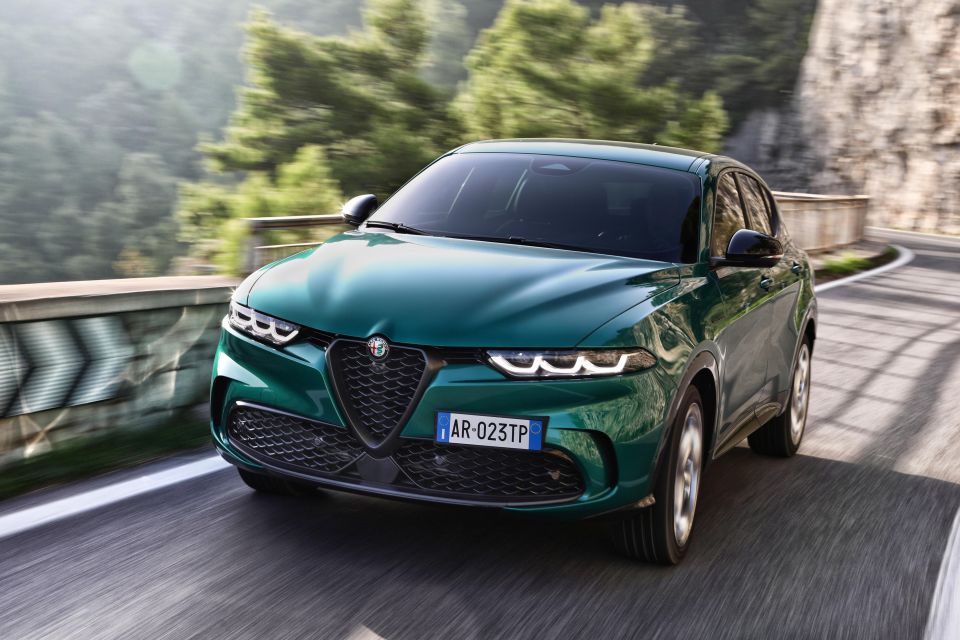
Prod the start button on the steering wheel and the Tonale defaults to electric mode.
It can be locked in EV mode by selecting A (advanced efficiency) on the mode dial, but even in N (normal; cycles between electric and petrol power as required) it leans hard on the electric motor when there’s charge in the battery.
With 90kW of power hauling a 1835kg crossover, it doesn’t feel like a rocket in electric mode; but the Tonale moves off the mark smoothly and will pull all the way to 135km/h without burning a drop of petrol.
Cruising at 90km/h it still had some performance in reserve to accelerate up to highway speeds, but pushing deeper into the throttle’s travel to overtake had the engine kicking in. When it does fire, the engine comes into play smoothly and, for the most part, quietly.
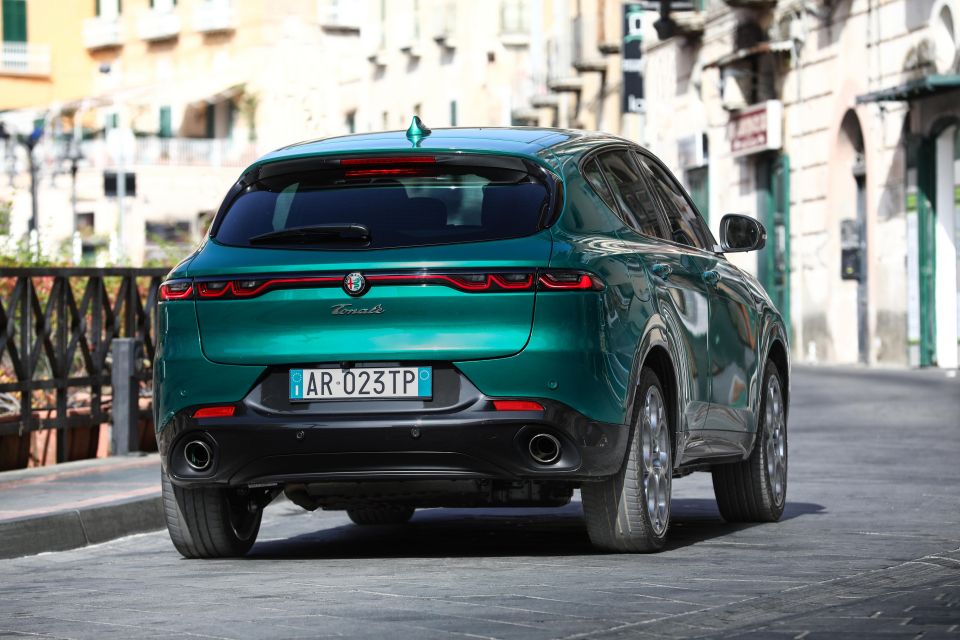
Vibrations are well suppressed at lower revs, although it does get a bit shouty if you force it to hang onto gears.
Unlike with some PHEV systems, the petrol engine kicking in doesn’t result in an unnatural surge of power. It cuts out without so much as a shudder, and the brake pedal doesn’t have the same awkward, wooden feeling that afflicts other hybrids at low speeds.
With both petrol and electric power sources singing, the Tonale gets a move on. With the electric motor and petrol engine in play it feels every bit as quick as the official 6.2-second claim to 100km/h would suggest.
Flicking into D (or dynamic) forces the engine to stay on, generally holds a lower gear, and primes the electric motor to offer a helping hand.
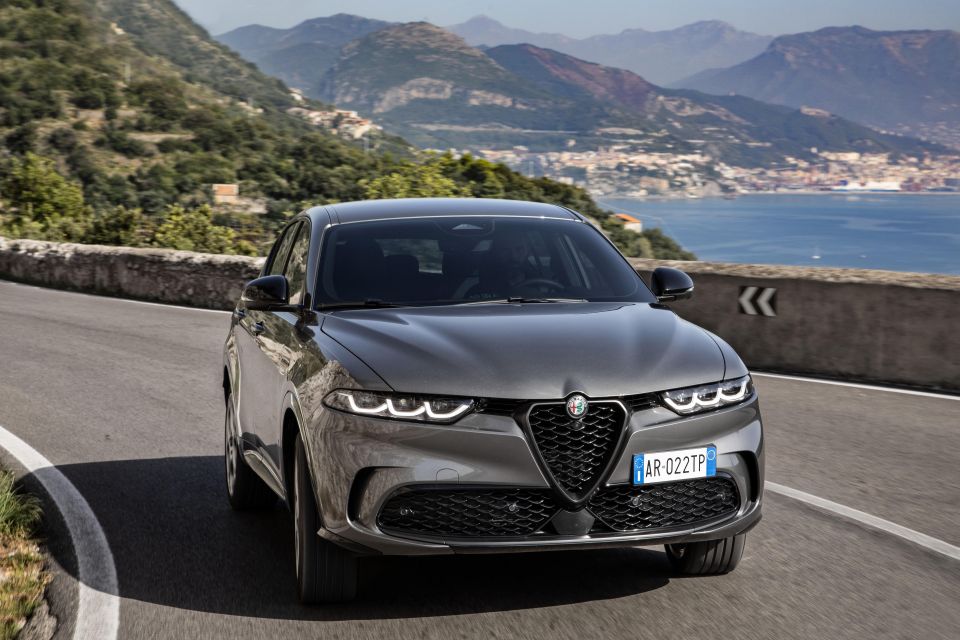
It also sharpens the throttle, puts the two-stage dampers into their stiffest mode, and activates a torque vectoring system that brakes the inside wheels and sends extra torque to the outside rear wheel to make the Tonale feel more agile.
It’s hard to pick unless you’re really flogging the Tonale, but some time on Alfa Romeo’s test track in Balocco has us convinced the system works. There’s no getting away from the Tonale’s weight, but it rotates better than you’d expect of a heavy SUV, and doesn’t devolve into ugly understeer if you get on the accelerator in the middle of a corner.
Will the average owner notice? Unlikely, but the Alfisti out there will be heartened to know even the brand’s plug-in hybrid SUVs have something to offer owners willing to push.
What they will notice is the steering, which is incredibly light and quick off-centre. It’s a trait present across the Alfa line-up, and initially makes the Tonale feel sporty on a surface level alongside rivals with more relaxed steering racks.

Where expert car reviews meet expert car buying – CarExpert gives you trusted advice, personalised service and real savings on your next new car.
When you aren’t on a test track in northern Italy – so, most of the time – the Tonale majors on quiet comptence.
Ride quality is decent, but as is the case in most small-ish plug-in hybrids, you feel the weight of the battery pack at times. The battery pack here weighs 125kg, and that doesn’t include the weight of the e-motor and its housing on the rear axle.
It thumps over potholes and scarred tarmac at lower speeds, and it takes a second to settle over some bigger bumps. As the speed rises the ride improves; the car feels nicely settled at highway speeds, and does a good job keeping road and wind noise out.
We’ll reserve final judgement until we’ve tested the car on Australia’s average country highways, but at 130km/h on the autostrada it was easy to hold a conversation with a passenger.
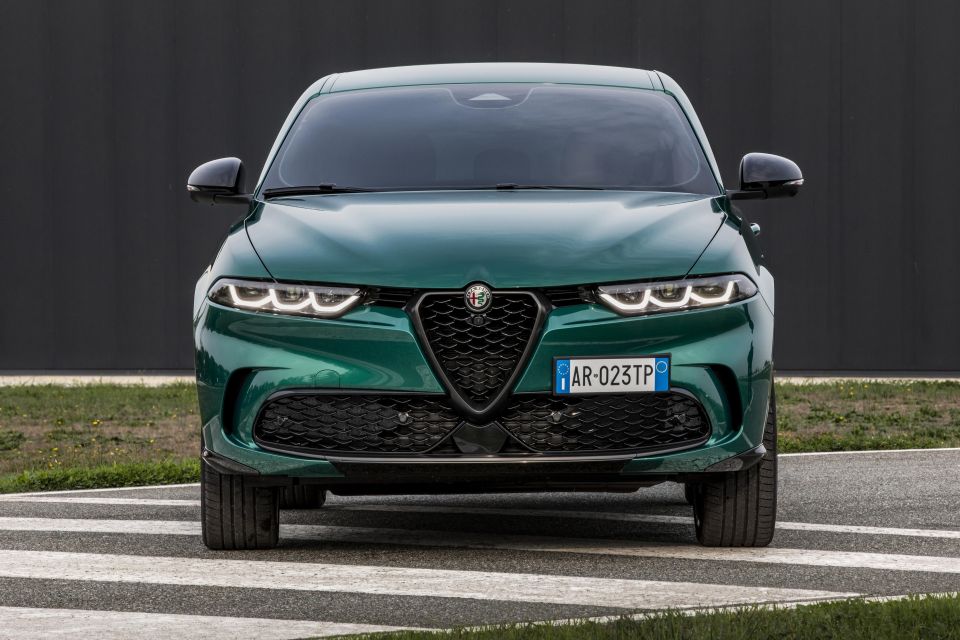
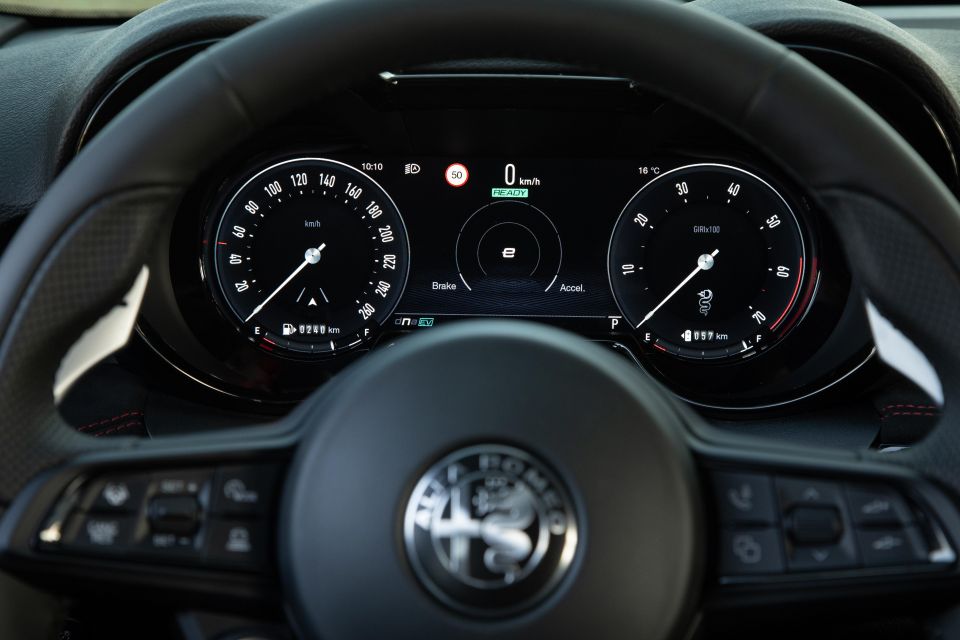
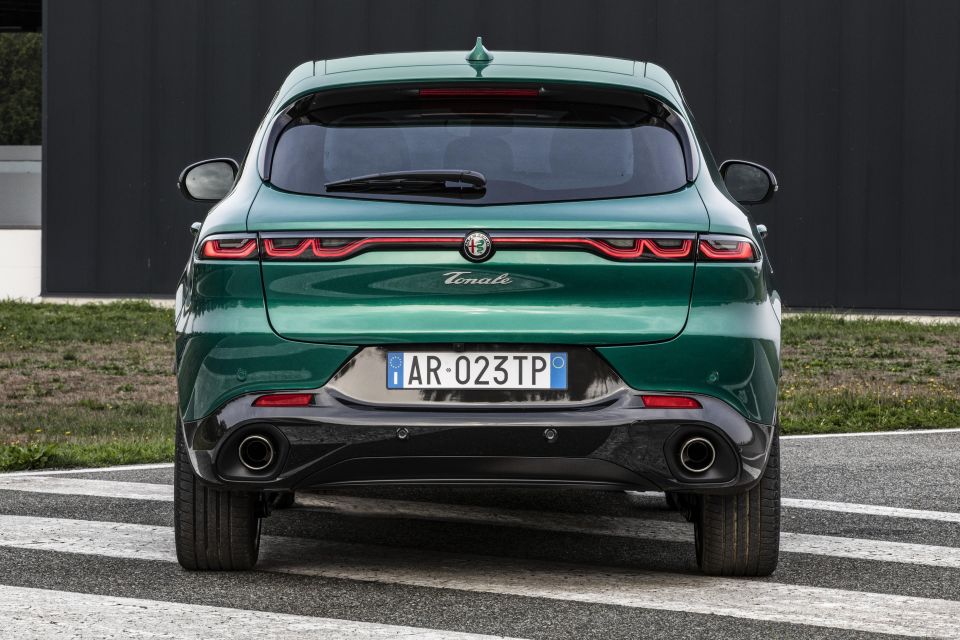

Specifications for the Tonale PHEV haven’t been locked in for Australia, but we know both Ti and Veloce grades of the plug-in will come Down Under.
In Europe, the car is available with a range of options packages that bring niceties like heated and powered seats, but a simple range with no options is more likely to come Down Under.
It’s likely their respective equipment packages will largely mirror those of the the hybrid models already confirmed.
Tonale Ti highlights:
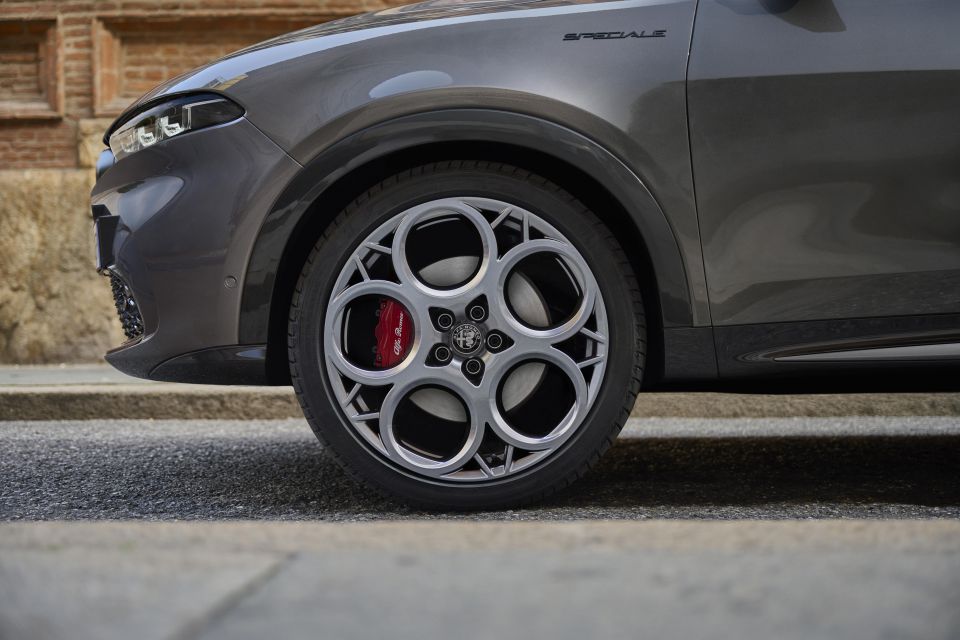
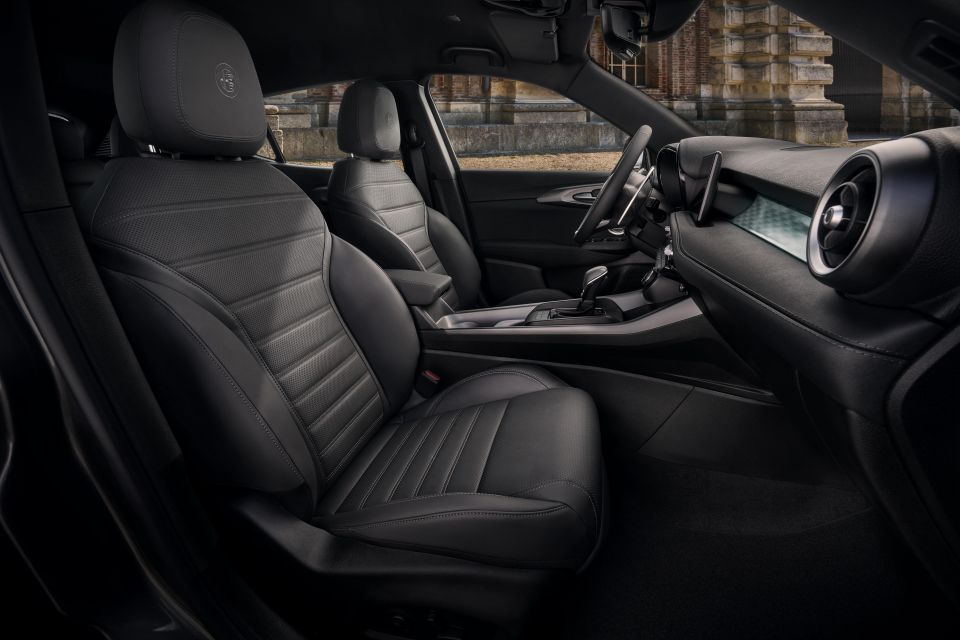
Tonale Veloce adds:
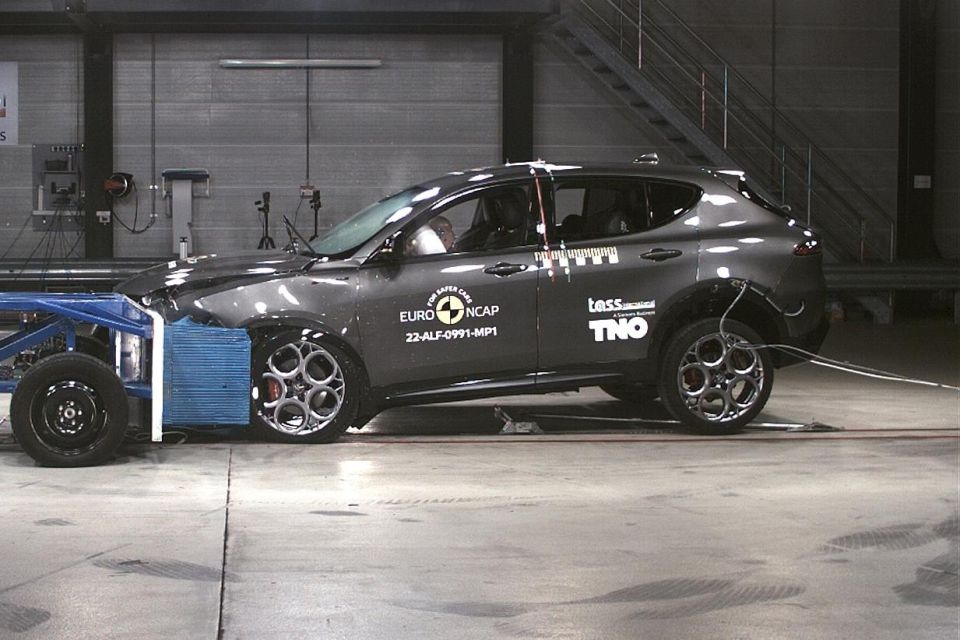
While the Alfa Romeo Tonale doesn’t yet have an ANCAP rating, it has a five-star rating from Euro NCAP. Alfa Romeo says an ANCAP rating is coming late in 2022.
This result was based on a score of 83 per cent for adult occupant protection, 85 per cent for child occupant protection, 67 per cent for vulnerable road user protection, and 85 per cent for safety assist.
Standard safety equipment includes:
Tonale Veloce adds:
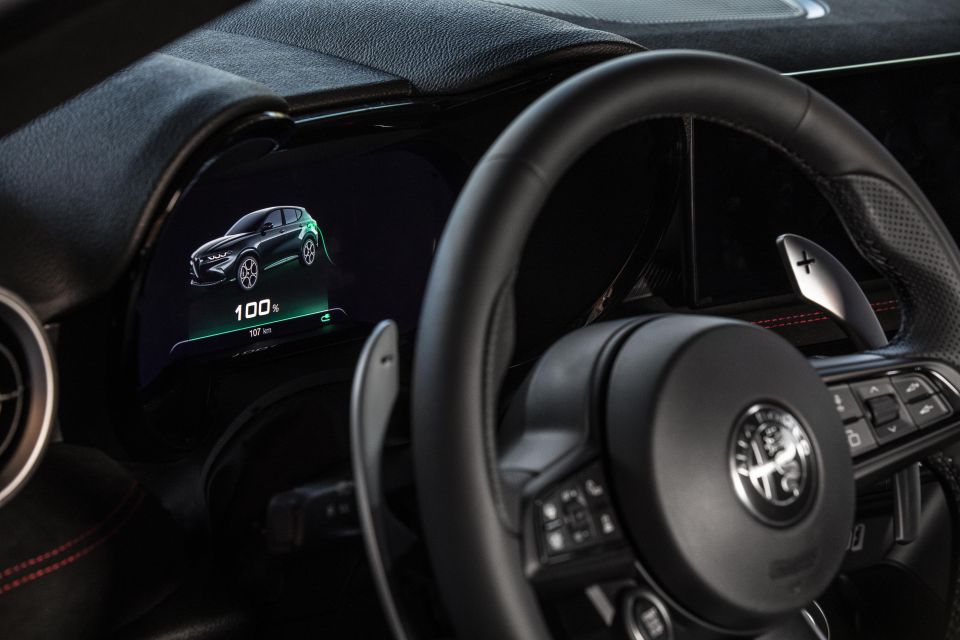
Alfa Romeo backs its cars with a five-year, unlimited-kilometre warranty in Australia.
Service pricing for the Tonale range is yet to be finalised.
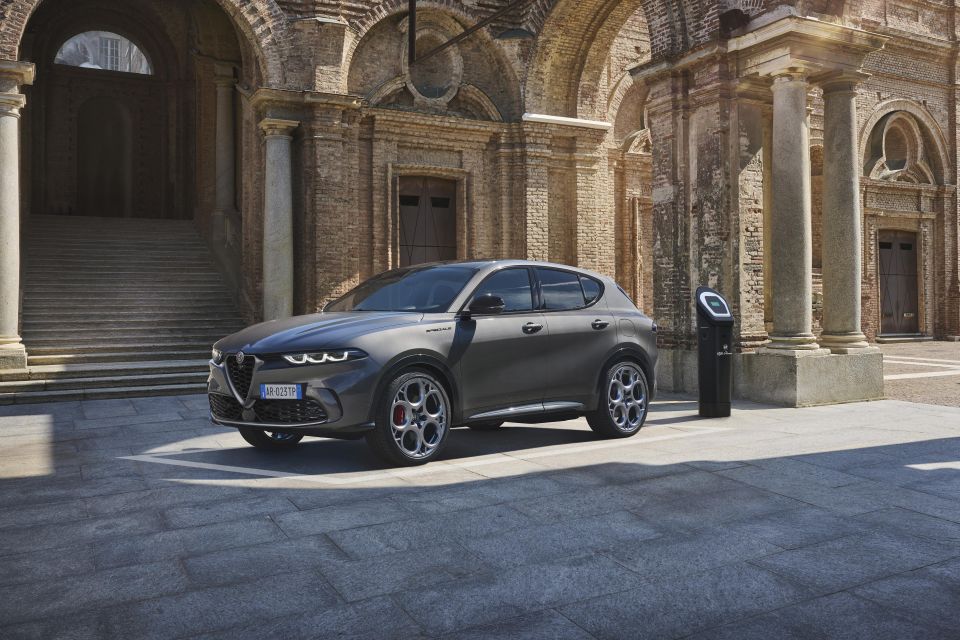
Buy your new car without the stress. It's fast, simple and completely free.

Great service from Travis and team, second time I have used this business would not hesitate to recommend them to anyone
Craig C.
Purchased a Ford Ranger in Sunshine Coast, QLD
CarExpert helped Craig save $7,224 on his Ford Ranger, now let us save you on your next new car.
Get your BEST priceThe Tonale won’t set your heart racing like a Giulia Quadrifoglio, but that isn’t really the point.
Based on our first taste it’s a handsome, nicely equipped alternative to the strong-selling German (and Swedish) establishment. The interior in particular sets the Tonale apart from its rivals, with an interesting design and solid cabin.
Plug-in hybrids are a niche corner of the Australian market. They’re not for everyone, and this particular PHEV won’t change that, but it does a good job blending electric and petrol power for those who can make a plug-in fit with their habits.
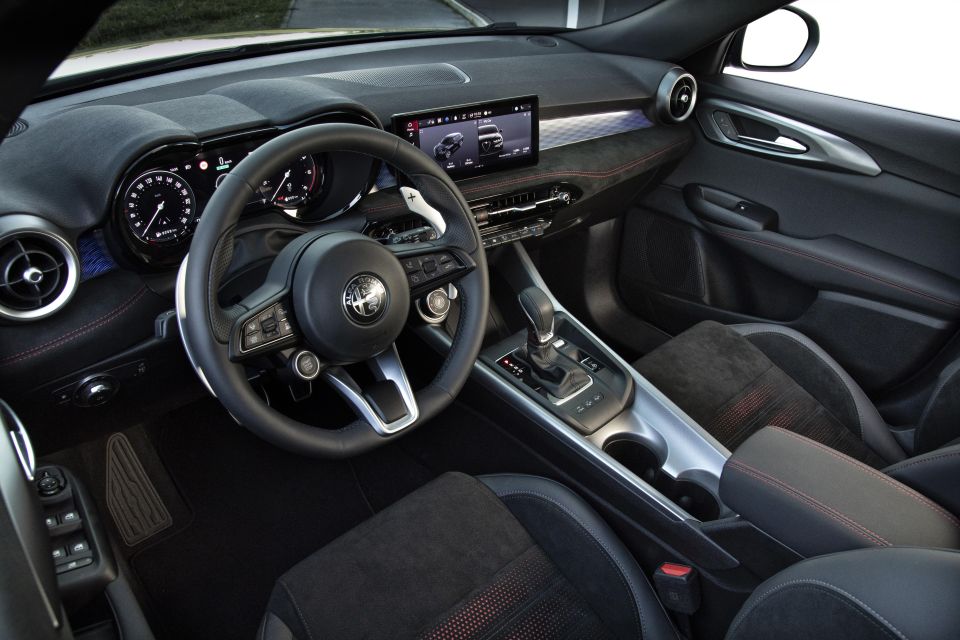
Its electric range is impressive, and the way the petrol engine interacts with the e-motor seems smart based on our brief time behind the wheel.
It’s also pretty quick in a straight line when the motor offers the petrol engine a hand, and the quick steering and clever torque vectoring gesture, albeit gently, at Alfa Romeo’s sporting past.
The Tonale PHEV shows plenty of potential. It’s a solid, if unremarkable, first step on the road to an all-electric Alfa brand.
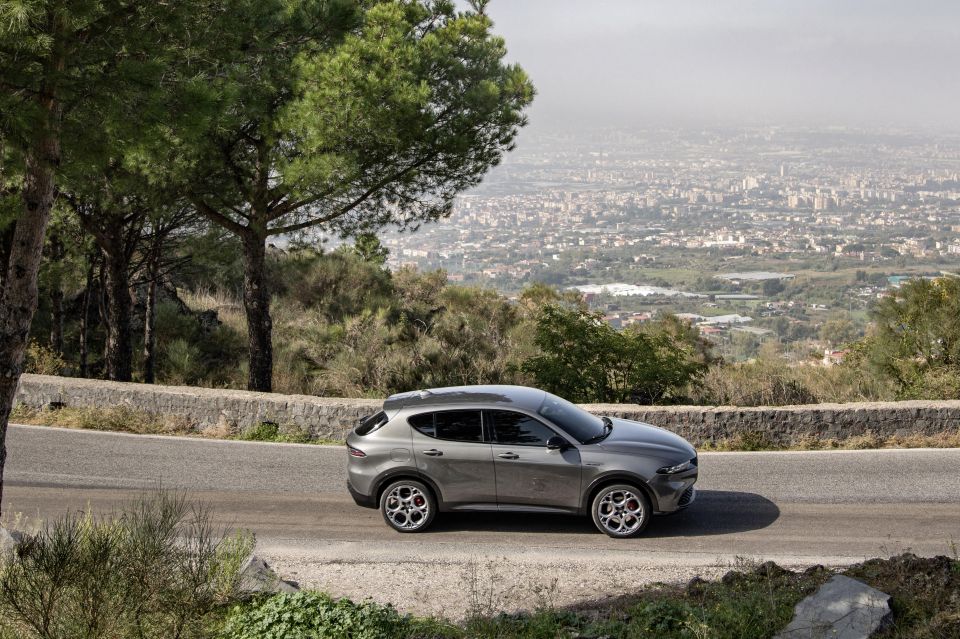
Click the images for the full gallery
Where expert car reviews meet expert car buying – CarExpert gives you trusted advice, personalised service and real savings on your next new car.
Scott Collie is an automotive journalist based in Melbourne, Australia. Scott studied journalism at RMIT University and, after a lifelong obsession with everything automotive, started covering the car industry shortly afterwards. He has a passion for travel, and is an avid Melbourne Demons supporter.


Neil Briscoe
5 Days Ago


Max Davies
4 Days Ago


James Wong
2 Days Ago


William Stopford
2 Days Ago


Josh Nevett
1 Day Ago


Paul Maric
17 Hours Ago